The turn of the 20th century was one of the most confident and ambitious times of the French colonial project in Indochina. That confidence was demonstrated in the creation of grand infrastructure projects and buildings by Governor General Paul Doumer. Many of the grandest buildings in the capital were constructed in the first decade of the 20th century - including the Metropole Hotel and the Governor General’s Residence (now the Presidential Palace) and the Opera House. No project was more ambitious from an engineering perspective than the 1.7 kilometre cantilevered bridge across the Red River. Governor Doumer was ready to impose all manner of hardship on the local people in taxes and forced labour to see his ambitions realised.
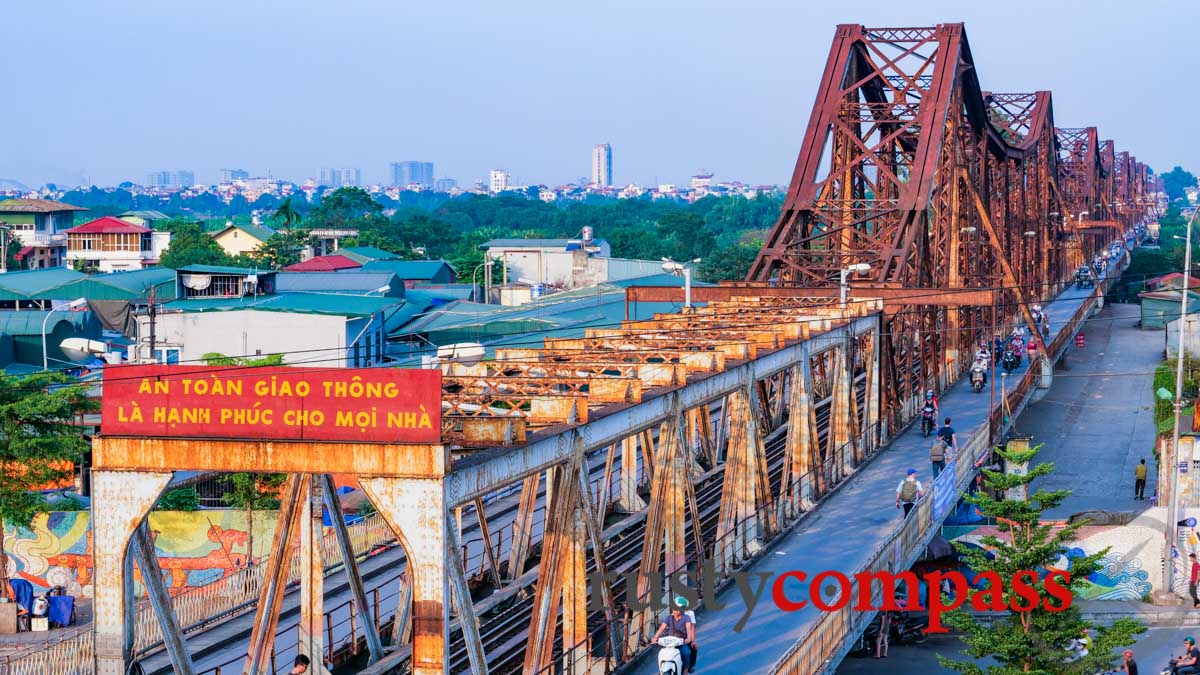
Photo: Mark Bowyer Long Bien Bridge from Serein Cafe - Hanoi
The bridge is often misreported to have been designed by Gustav Eiffel of Eiffel Tower fame. Historian Tim Doling assures me this is not correct. Eiffel’s former company made an unsuccessful bid to build the bridge. It was built by Dayde and Pille, as the plate still visible on the bridge attests. For reasons I don’t understand, this is the second Vietnam project to have been incorrectly attributed to Eiffel. Saigon’s grand Post Office has also been incorrectly credited to him.
The Long Bien bridge played an important role in Doumer’s plans to secure territory and expand trade into the northern reaches of the country. It opened up the colonial capital to the port of Haiphong and China. China always loomed large in France’s colonial plans.
Following his return home to France, Doumer went on to become President. He was assassinated in 1931.
After independence from France in 1954, the Paul Doumer bridge became the Long Bien Bridge and by the 1960s, it was a key piece of military infrastructure, connecting Hanoi with military supplies from the Soviet Union and China - especially via the port of Haiphong. It came under frequent US attack and was disabled in 1967 and again in 1972 in US bombing raids. It still carries the scars of numerous direct hits with large sections of the original bridge missing. In wartime, dedicated teams worked to repair the bridge after each bombing, to keep vital supply lines open.
These days, the bridge is used only by rail, two wheeled and foot traffic.
It’s a great place for viewing the dramatic Red River summer sunset. You can take some time to wander around the rural enclave below the bridge just a few hundred metres from the intensity of Hanoi. There’s a ramp off the bridge from the pedestrian walk way.
Serein Cafe at 16 Tran Nhat Duat, right near Long Bien Station has superb views across the bridge and is a popular spot for Instagramming young locals. The owners know their views are a prize so drink prices are on the high side for Hanoi.
A number of local restaurants have opened on the river bank opposite the city. We haven’t tried them yet. But a walk across followed by dinner looking over the river sounds like a nice idea.

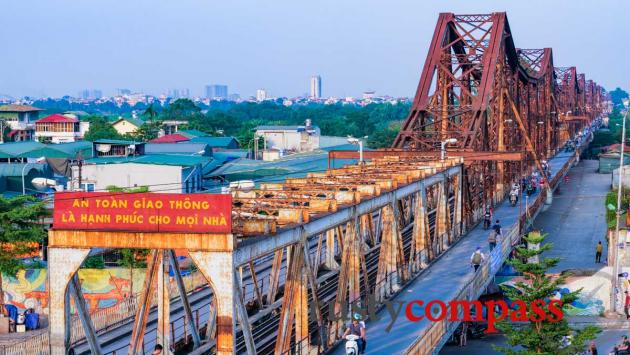
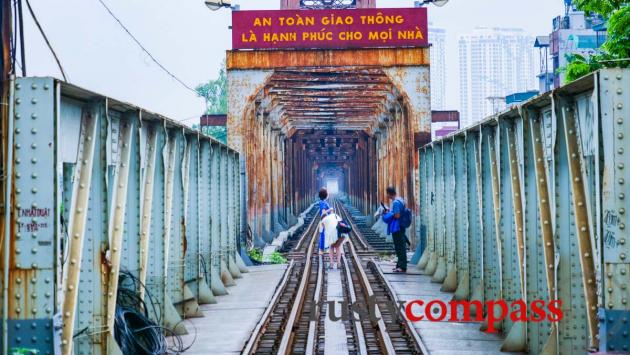
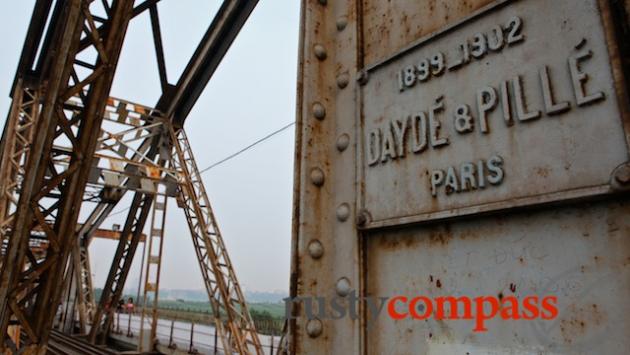
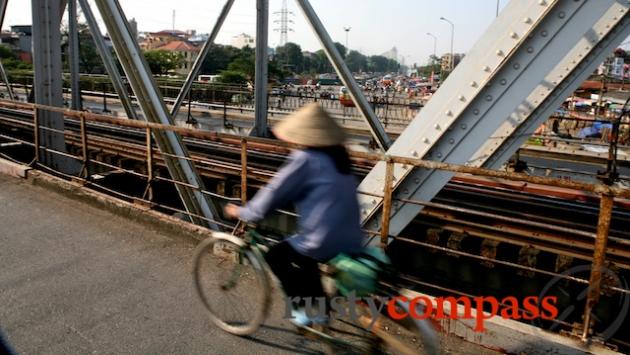
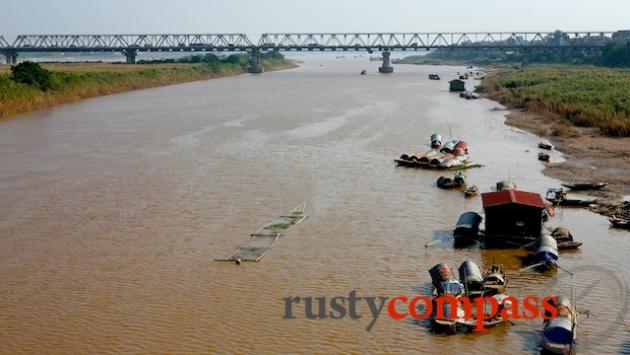
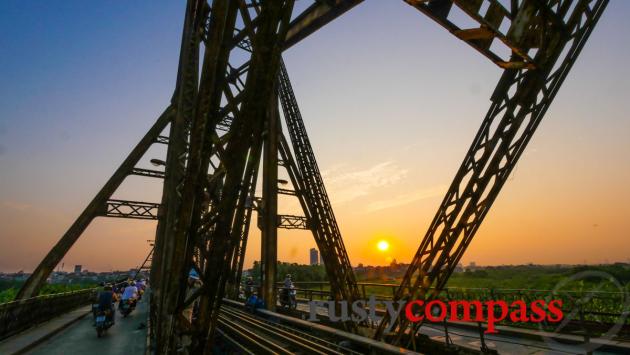
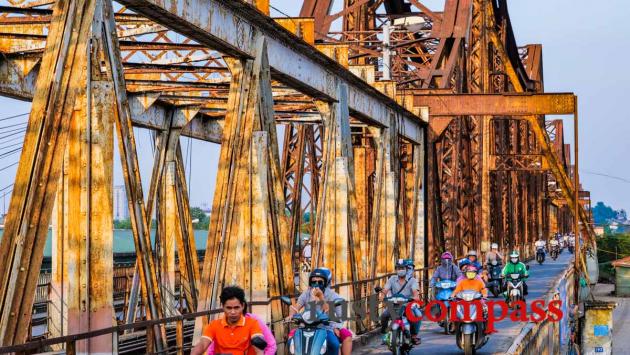







There are no comments yet.